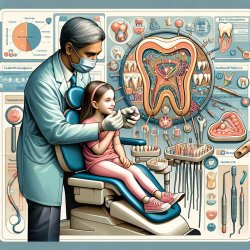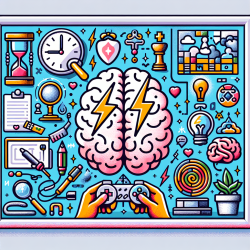Providing effective dental care to children with cerebral palsy (CP) presents unique challenges that require specialized knowledge and skills. A recent review article, "Cerebral Palsy: A Dental Update," highlights essential considerations and management strategies that can significantly improve outcomes for these patients. This blog will delve into key findings from the research and suggest practical applications for dental practitioners.
Understanding Cerebral Palsy and Its Dental Implications
Cerebral palsy is a non-progressive neurological disorder affecting movement, coordination, and posture. The prevalence of CP is approximately 2 to 2.5 per 1000 live births. Given the complex nature of CP, dental practitioners must adapt their approaches to accommodate the specific needs of these patients.
Key Dental Manifestations in Children with CP
Children with CP often present with a range of dental issues, including:
- Malocclusion: High prevalence, often classified as Angles Class II, with increased overjet and overbite.
- Traumatic Dental Injuries: Higher incidence due to factors like prominent maxillary incisors and difficulty in ambulation.
- Bruxism: Habitual grinding of teeth, leading to tooth abrasion and flat biting surfaces.
- Dental Caries: High incidence due to multifactorial causes, including dietary consistency and oromotor function.
- Sialorrhea: Excessive drooling due to dysfunction in swallowing coordination.
- Oral Hygiene: Challenges in maintaining oral hygiene, often leading to poor oral health status.
- Dental Erosion: Commonly observed in upper and lower molars and upper incisors.
- Enamel Defects: High prevalence, often associated with premature birth.
- TMJ Disorders: Increased risk due to factors like malocclusion and mouth breathing.
Strategies for Effective Dental Management
To address these challenges, the research recommends several strategies:
- Early Diagnosis: Early identification of CP is crucial for optimizing therapeutic interventions.
- First Dental Visit: Schedule the patient early in the day and allow sufficient time to build rapport with the patient and their guardians.
- Patient Positioning: Adjust the dental chair to provide stability and support, especially for patients with ataxia or spasticity.
- Home Oral Health Practice: Teach parents and guardians proper toothbrushing techniques and safe restraint methods for home care.
- Use of Anesthesia: Appropriate use of sedation and anesthesia to manage anxiety and facilitate dental procedures.
Encouraging Further Research
While the current research provides valuable insights, continuous learning and adaptation are essential. Practitioners are encouraged to stay updated with the latest studies and evidence-based practices to enhance their skills and improve patient outcomes.To read the original research paper, please follow this link:
Cerebral Palsy: A Dental Update.










